As a student, you have to write a lot of essays, ranging from argumentative essays down to synthesis essays.
While a synthesis essay is pretty common, it doesn’t mean it is an easy essay for everyone to write.
But you don’t have to fret. In this article, we will teach you everything from how to write a good synthesis essay to their structure and even offer examples.
What Is A Synthesis Essay?
A synthesis essay is a type of essay that collates data, evidence and points from several essays and turns them into one idea that the piece revolves around.
In other words, the writer synthesized their essay from other people’s research and points.
Synthesis essays are usually a type of analytical essay however, they can overlap with an argumentative essay.
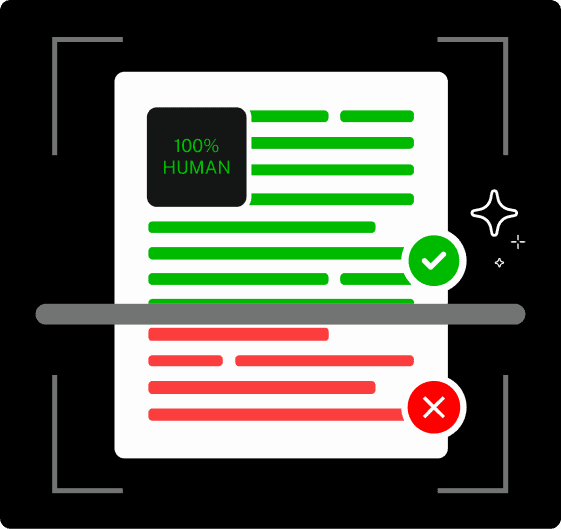
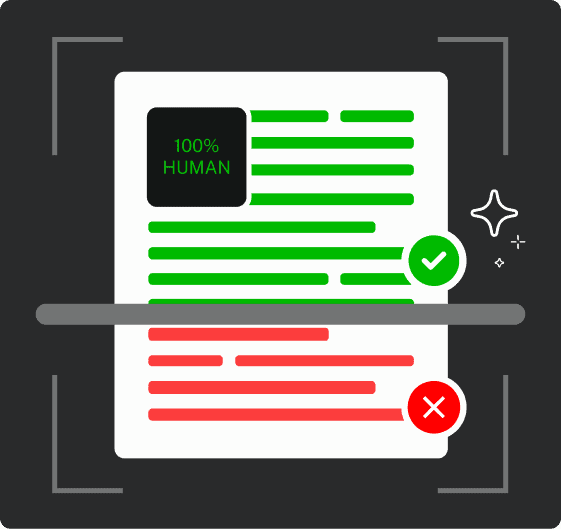
Never Worry About AI Detecting Your Texts Again. Undetectable AI Can Help You:
- Make your AI assisted writing appear human-like.
- Bypass all major AI detection tools with just one click.
- Use AI safely and confidently in school and work.
Synthesis essays can be of different types including:
- Argumentative Synthesis: This type of synthesis essay has a strong thesis statement that presents only the writer’s point of view. It organizes the relevant data gathered in order to support the writer’s point.
- Review: A review is a synthesis often written as an adjunct to an argumentative synthesis. It is usually a discussion of what has been written previously on a topic, with a critical analysis of the evidence collated. This type is common in applied sciences.
- Explanatory Synthesis: The purpose of this type of synthesis essay is done when different sources are collected to share a particular view. Unlike an argumentative synthesis, this essay objectively examines similarities and differences between ideas but doesn’t attempt to pick a side or sway the reader in one direction.
What Is the Goal of A Synthesis Essay?
The goal of a synthesis essay is to make correlations between parts of multiple works, with the aim of using it to support the claim of another topic.
This means that when researching a topic, writing a synthesis essay helps you build solid connections that can form an informed perspective on the topic. If you’re unsure how to connect your sources effectively, a thesis statement generator can assist you in crafting a focused thesis that ties everything together.
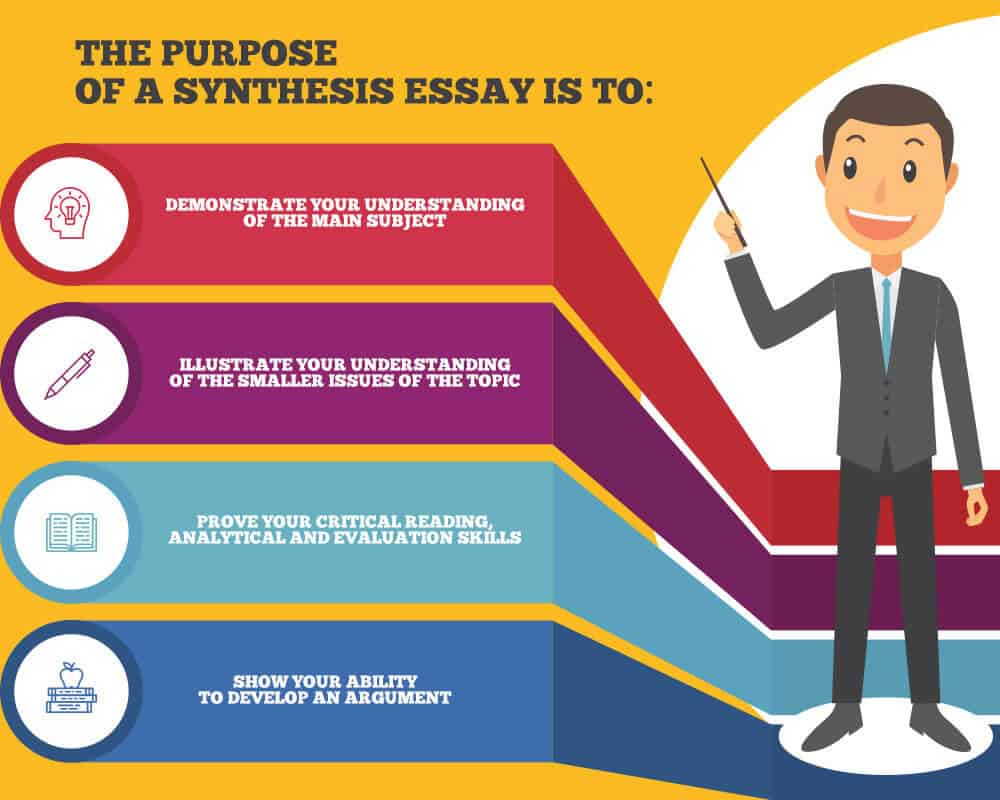
Additional information here – The Assignment Ninjas
How To Prepare Before Writing
To write a very exceptional synthesis essay, you must effectively prepare before you begin to write.
Here are some tips on how to prepare.
- Understand the Subject Matter: Grasp all the requirements within the assignment by fully understanding what you need to accomplish. A particular set of terms like “compare,” “contrast,” “evaluate” or “analyze” within the assignment requirements will steer your research direction.
Also, make a note of the required sources including their types, essential aspects to include and the needed reference style.
- Begin the Research: Once you understand the subject matter, gather relevant sources that address your topic from different angles. Look for credible data in academic sources such as peer-reviewed journals, government reports and books.
Ensure that you collect more sources than you need as this gives you the flexibility to select the relevant ones as your essay develops.
- Evaluate Your Source: Not every source is created equal. Assess each source and consider aspects like is the author qualified to write on this topic. Does the source directly address aspects of your topic? Is the information up-to-date, or has new research superseded it? Create a system to track your evaluation, either through a spreadsheet or a table.
Finally, if you are ready to organize your thoughts or understand how to write a thesis for a synthesis essay, our Undetectable AI Chat can help you jumpstart the process.
You can ask it to suggest a potential thesis based on your research focus, request outlines that arrange your sources in different ways and even get feedback on your initial ideas.

It is important to remember that AI suggestions should start as a starting point rather than a finished product.
How To Structure A Synthesis Essay
The systematic organization of an essay enables readers to follow the research logic while they understand how various information sources support the argument.
When determining the structure the specific approach may differ according to the subject matter and writing style, however, this universal model functions across all types of synthesis papers.
Introduction
Your introduction should set the stage for your synthesis essay by capturing the reader’s interest with a compelling hook.
This hook can be a surprising statistic, a relevant quotation, or a thought-provoking question.
It should also provide necessary background information and introduce the sources you’d be synthesizing.
Your thesis statement stands as a central claim that reflects your source synthesis in the last section of your introduction.
A strong thesis summarizes source content while showcasing the original analysis you achieved through studying these sources.
Body
The main section of your composition marks the starting point for your synthesis essay.
The beginning of each paragraph needs to establish a topic sentence that defends the thesis.
You should incorporate multiple sources related to the topic and then compare their alignment or discrepancies during the analysis phase.
The body conclusion should contain a logical transition that moves to the next point.
Instead of organizing your paragraphs source by source, you should arrange them by themes, patterns or aspects of your essay.
This method encourages you to seamlessly integrate different sources into one another.
Conclusion
This section stands as the core component because it revisits your thesis following evidence evaluation while bringing together essential relationships, highlighting the value of your synthesis, and proposing possibilities for future research or practical implementation.
Learning how to write a conclusion for a synthesis essay effectively will help readers understand the purpose of your work within the subject area.
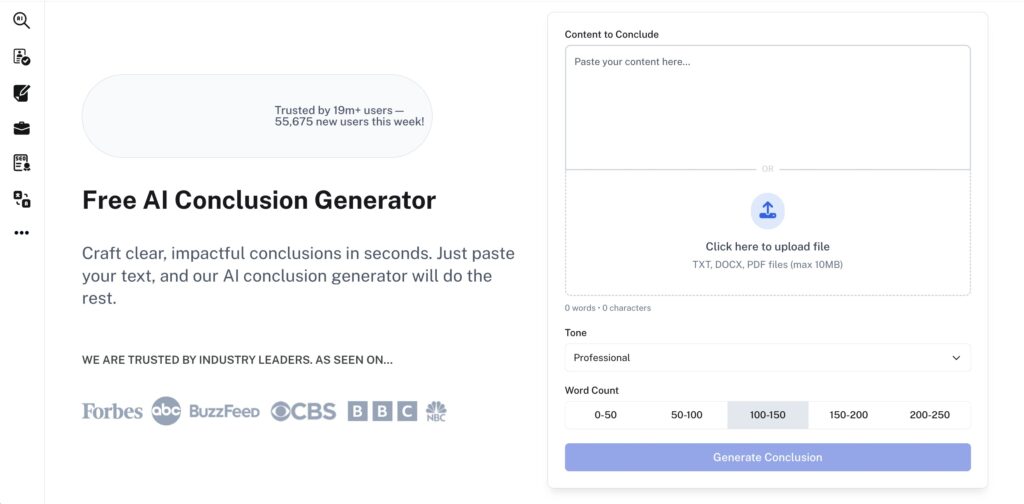
If you’re not sure how to wrap up your synthesis essay with clarity and confidence, our AI Conclusion Generator can step in to help.
It takes everything you’ve written — your thesis, sources, arguments, and key points — and crafts a thoughtful, final paragraph that reinforces your perspective and highlights the value of your synthesis.
Whether you’re restating a complex argument or tying together multiple ideas, this tool is built to help you end strong without sounding repetitive.
It’s especially useful if you struggle to land on the “big takeaway” in a way that still sounds like you.
Synthesis Essay Outline Template
Creating a solid synthesis essay template is another hurdle to cross while writing a synthesis essay.
Unlike other essay outlines, an outline for this type of essay has to include points from various sources and the combination doesn’t need to have a logical or chronological sequence.
To help you, here are three strategies for creating a synthesis essay template:
Synthesis Essay Outline 1: By Topic
This type of outline involves discussing each topic individually, mentioning the perspective of each source and moving on to the next topic.
The approach is good as it allows you to compare and contrast points made by different sources on the same topic.
An example of this outline will look like this:
- Introduction
- Thesis statement
- Topic 1
- Source A discussing Topic 1
- A point or piece of evidence/data from Source A about Topic 1
- Another point or piece of evidence/data from Source A about Topic 1
- Source B discussing Topic 1
- A point or piece of evidence/data from Source B about Topic 1
- Another point or piece of evidence/data from Source B about Topic 1
- Topic 2
- Source A discussing Topic 2
- A point or piece of evidence/data from Source A about Topic 2
- Conclusion
Synthesis Essay Outline 2: By Source
In an alternative method, you can organize your essay structure by source.
This way, you discuss the main point of one source together and then move on to another source.
This method allows you to compartmentalize the main points from where they came from and bring together main points from different sources.
An example of this outline will look like this:
- Introduction
- Thesis statement
- Source 1
- Source 1 discussing Topic A
- A point or piece of evidence/data from Source 1 about Topic A
- Another point or piece of evidence/data from Source 1 about Topic A
- Source 1 discussing Topic B
- A point or piece of evidence/data from Source 1 about Topic B
- Source 2
- Source 2 discussing Topic A
- Source 2 discussing Topic B
- Conclusion
Synthesis Essay Outline 3: Combination
No essay outline is set in stone.
You are free to adapt the first or the second and even combine them.
For example, you may begin your essay by discussing each topic individually so your reader understands the subject matter.
You could then switch it up and include a session that explains a source’s stance on the previously discussed subject matters.
Here is an example of a synthesis essay:
“Research reveals contradictory impacts of remote work. Stanford studies show productivity increases of 13% (Bloom, 2020), while Microsoft research indicates boundary erosion with 42% more after-hours communication (Microsoft, 2021). Sociologist Hochschild’s “second shift” concept explains why work-life boundaries suffer despite eliminated commutes.
Meanwhile, economist Turner Lee (2020) demonstrates how digital divides create inequitable access, contradicting Myers’ assertion that remote work reduces workplace discrimination (2020). This tension suggests organizations must implement thoughtful remote policies addressing communication norms, digital equity, and boundary preservation to maximize benefits.”
Tips For Writing A Strong Synthesis Essay
Here are tips for writing a strong synthesis essay:
- Develop a Strong Thesis: Your thesis is the cornerstone of your essay. A strong thesis helps you make a claim that requires synthesis to support or reflect connections between multiple sources.
Avoid thesis statements that merely announce your topic such as “this essay will discuss views on climate change.” Instead, explore the unique insights that come from combining the sources together.
- Use Strategic Organization: The way you organize your essay should serve your synthesis rather than forcing you to follow a rigid structure.
Some of the approaches you should consider include a thematic organization which groups sources by shared themes or concepts; a methodological organization, which arranges sources by research approaches; a chronological organization, which presents ideas as they develop over time and a point-of-view organization, which structures by different perspectives on your topic.
- Balance Source Material and Original Thinking: A common pitfall in synthesis essays is letting quoted materials override your original thoughts. Aim for a balance where each paragraph contains more of your analysis than direct quotation and your voice remains the guiding balance throughout each essay. Your goal is to create something new from your source, not a repetition of all that has been said.
- Acknowledge Contradictions: Don’t shy away from addressing contradictions or disagreements amongst your sources. In fact, exploring these tensions often leads to the most interesting synthesis and engaging the different viewpoints demonstrates your critical thinking and strengthens your overall argument.
- Revise Thoroughly: After you have finished drafting your essay, take time to carefully read through. Check for logical flow from one idea to the next, a balanced representation of your sources and clear connections between sources and your thesis.
Also, appropriate integration of source material, consistent citation format and varied sentence structure and transitions is important for an excellent synthesis essay.
You can have a peer review your essay with specific attention to how effectively you’ve synthesized your sources.

For more information, check out this resource from Penmy Paper.
How AI Can Help You Write a Better Synthesis Essay
Artificial intelligence tools from Undetectable AI can support various aspects of your synthesis essay process, ensuring that you work effectively.
Some of these tools include:
AI Essay Writer
Undetectable AI Essay Writer can help you generate thesis ideas by analyzing the connections between your source materials and creating comprehensive outlines that organize your sources in meaningful ways.
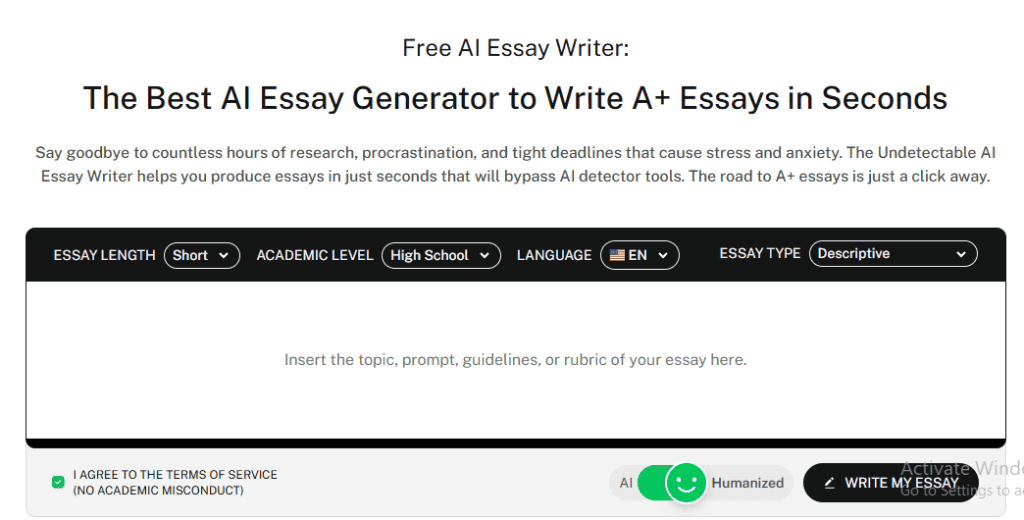
This tool can also help you draft initial paragraphs that you can use to refine, expand and identify the gaps in your argument that need additional support.
This tool works best when you provide specific information about your sources and the connections you’ve observed.
Paraphrasing tool
When integrating source material, Paraphrasing tool from Undetectable AI can help you rephrase quotes effectively while maintaining their original meaning and avoid inadvertent plagiarism by finding alternative ways to express ideas.
Additionally, it helps you to simplify complex technical language from your sources and maintain a consistent tone throughout your essay.

However, you should always remember to provide references when paraphrasing others’ work because you use their concepts even when expressing those ideas in your own words.
AI Chat
Undetectable AI chat serves as an interactive writing tool that provides feedback for thesis statements and specific sections of your essay or counterargument suggestions.
You should direct your questions to AI chat because asking specific questions results in more precise and beneficial answers.

If you’re writing your synthesis essay in MLA format, our MLA Citation Generator can help you wrap it up with precision.
It doesn’t just build accurate Works Cited entries, it also helps you craft conclusion paragraphs that align with MLA’s academic tone.

Whether you’re summarizing your key sources or reinforcing your central theme, this tool makes it easier to present your synthesis in a way that’s stylistically on point and citation-ready.
Be sure to check out our AI Detector and Humanizer in the widget below!
FAQs About Synthesis Essays
Do I Need To Include Counterarguments?
The addition of counterarguments to your synthesis essay supports your work because it shows your consideration of various viewpoints.
Include opposing perspectives by devoting a separate paragraph to against-arguments or incorporate them naturally during each subject development in your argument.
How Many Sources Should I Use?
The appropriate number of sources depends on your assignment requirements and the complexity of your topic.
This can vary from four to a thousand sources. While meeting the minimum requirement is essential, it is important to focus on the quality and relevance of your sources rather than sheer quantity.
What Citation Style Should I Use?
The citation system must follow either the method established in your assignment or the requirements from your instructor.
The absence of style instructions allows you to choose between Modern Language Association (MLA) and American Psychological Association (APA) and American Medical Association (AMA) citation conventions.
Maintain consistency by using your chosen writing style across all parts of the essay including both in-text citations and the works cited section.
Conclusion
Writing a synthesis essay is a great way to learn about a topic.
It helps you explore different viewpoints and see how they fit together.
However, if this is still confusing for you, sign up for Undetectable AI and let us create comprehensive outlines that organize your sources in meaningful ways.
